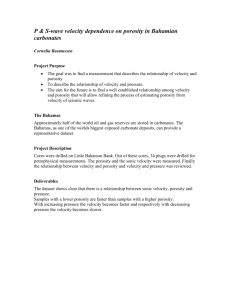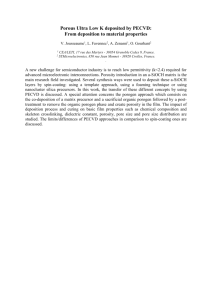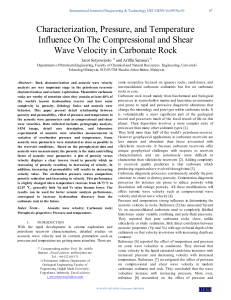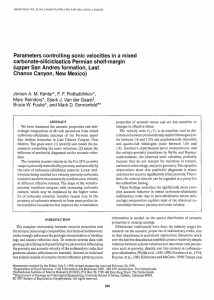The application of μ-XCT, porosity and velocity measurements in
advertisement
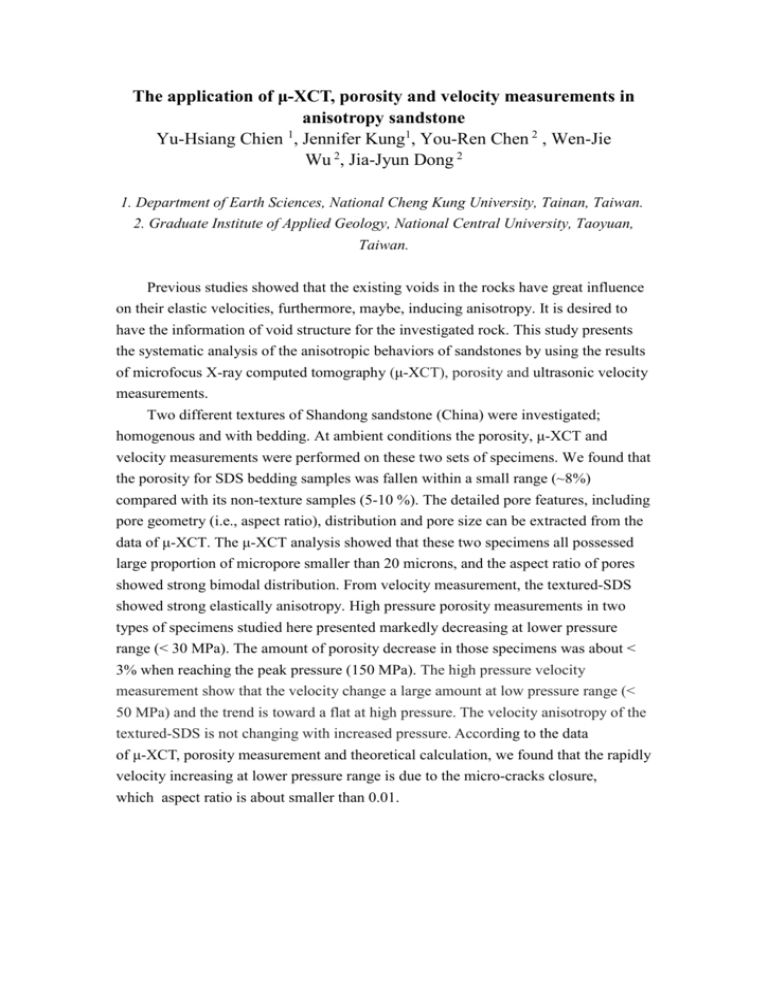
The application of μ-XCT, porosity and velocity measurements in anisotropy sandstone 1 Yu-Hsiang Chien , Jennifer Kung1, You-Ren Chen 2 , Wen-Jie Wu 2, Jia-Jyun Dong 2 1. Department of Earth Sciences, National Cheng Kung University, Tainan, Taiwan. 2. Graduate Institute of Applied Geology, National Central University, Taoyuan, Taiwan. Previous studies showed that the existing voids in the rocks have great influence on their elastic velocities, furthermore, maybe, inducing anisotropy. It is desired to have the information of void structure for the investigated rock. This study presents the systematic analysis of the anisotropic behaviors of sandstones by using the results of microfocus X-ray computed tomography (μ-XCT), porosity and ultrasonic velocity measurements. Two different textures of Shandong sandstone (China) were investigated; homogenous and with bedding. At ambient conditions the porosity, μ-XCT and velocity measurements were performed on these two sets of specimens. We found that the porosity for SDS bedding samples was fallen within a small range (~8%) compared with its non-texture samples (5-10 %). The detailed pore features, including pore geometry (i.e., aspect ratio), distribution and pore size can be extracted from the data of μ-XCT. The μ-XCT analysis showed that these two specimens all possessed large proportion of micropore smaller than 20 microns, and the aspect ratio of pores showed strong bimodal distribution. From velocity measurement, the textured-SDS showed strong elastically anisotropy. High pressure porosity measurements in two types of specimens studied here presented markedly decreasing at lower pressure range (< 30 MPa). The amount of porosity decrease in those specimens was about < 3% when reaching the peak pressure (150 MPa). The high pressure velocity measurement show that the velocity change a large amount at low pressure range (< 50 MPa) and the trend is toward a flat at high pressure. The velocity anisotropy of the textured-SDS is not changing with increased pressure. According to the data of μ-XCT, porosity measurement and theoretical calculation, we found that the rapidly velocity increasing at lower pressure range is due to the micro-cracks closure, which aspect ratio is about smaller than 0.01.

